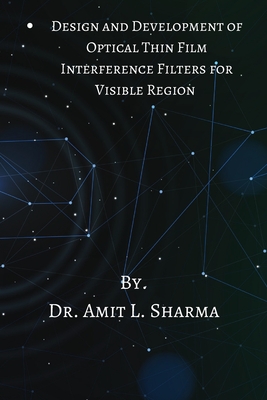You are here
Back to topDesign and development of optical thin film interference filters for visible region (Paperback)
Description
Optical Thin film coating technology is one of the oldest and continuous growing technology. Innovations in thin film coating technology are allowing scientists and researchers to design new types of optical filters for various applications. These thin films find wide spread use in various fields such as electronics, sensors, biomedical, laser instrumentation, new screen display technologies, smarter windows, protective coatings for glass and polymer substrates, head up displays, helmet mounted displays, see through displays, projection displays and efficient photovoltaic devices. In addition, these films find applications in optical industries for manufacturing of filters such as band pass, band stop, edge filters, notch filters, high reflection filter, anti-reflection filters, beam splitter, neutral density filters, etc. Such films work on the principle of interference of light to achieve desired optical characteristics such as reflection and transmission. Apart from the optical properties of the film such as reflection and transmission, there are various other parameters which plays major role in achieving desired quality of films. These parameters include film thickness, surface quality, average roughness and the tilt in deposited film. Depending on the wavelength and region of interest in the electromagnetic spectrum, the materials could be selected based on their optical transparency, density and refractive index. The commonly used materials for the deposition of thin films include dielectric metal oxides, metals, fluorides and composites. In the present research work, dielectric oxides such as silicon dioxide, Aluminium dioxide, titanium dioxide, tantalum dioxide, zirconium dioxide etc. were used for the visible region of wavelength. Although, these materials are commonly used for the deposition and fabrication of optical thin films but still the requirement of desired optical performance has made the role of manufacturer quite challenging. So, there is a need to achieve high accuracy and wavelength selectivity with minimum optical thickness, reduced side harmonics outside the stop band, lower bandwidth and low total cost of the coating process. The present study is based on minimization of side-lobes using various methods such as conventional quarter wave Ostack, AR coating on both sides of the conventional stack, classical rugate, matching layers along with quintic and Gaussian apodization functions applied on both sides of the rugate structure. Conventional and graded index techniques were used for designing of various optical interference filters such as antireflection, high reflective band stop filters (single, double, triple), band pass cavity and notch filters for the application of see through displays in the visible region. The optical thickness of all the designs was less than 10 μm with 1.3 to 2.5 variation in refractive index. The performance of all the designs in terms of peak reflectance or transmittance and side-lobe suppression were studied and compared. Few of the designed filters were fabricated using the electron beam deposition and dual ebeam Ion assisted deposition on BK7 glass substrates for normal incidence angles. For the realization of multilayer filter, determination of the optical performance of the single layer and tooling factor is important for excellent repeatability and reproducibility. Hence, single layer films of silicon dioxide and aluminium dioxide were deposited at normal. In addition to understand the change in refractive index of the coated film at different angles the single layers were also deposited at oblique angle of incidence ranging from 10 to 80 . Further, with obtained indices from the single layer, the conventional multilayer stack and inhomogeneous stack reflective filters were deposited at normal incidence angle at a central wavelength of 550 and 610 nm for application of see through displays and projection systems.
